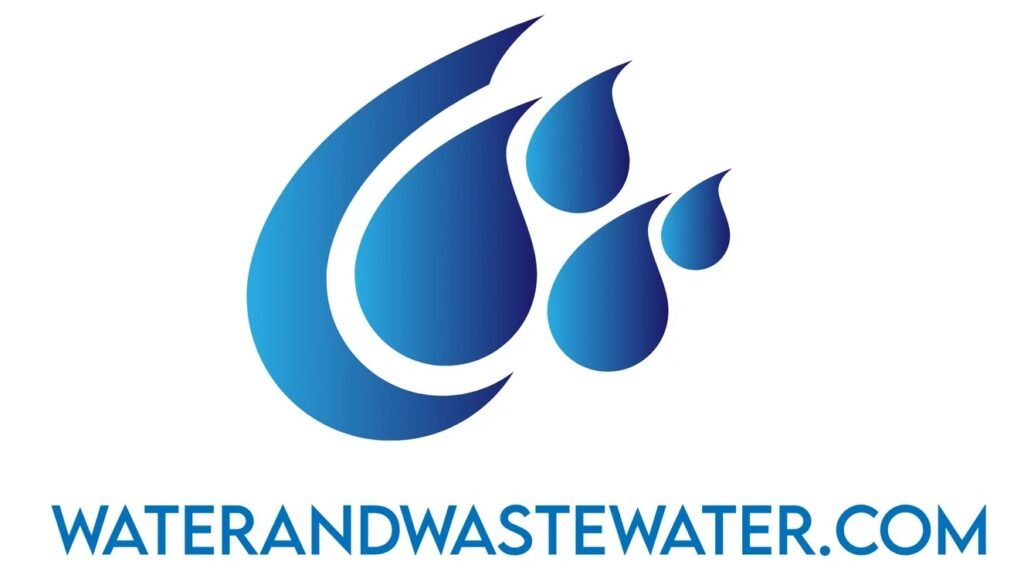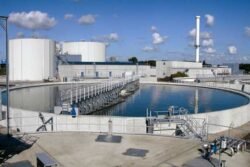
Philips UV-C Disinfection System
The Philips UV-C Disinfection System: Revolutionizing Cleanliness in a Post-Pandemic World
Introduction
As the world navigates the aftermath of the COVID-19 pandemic, the importance of maintaining hygienic environments has come to the forefront. With the heightened awareness of health and safety protocols, businesses, healthcare facilities, and households are increasingly turning to innovative solutions to ensure cleanliness and disinfection. One such solution gaining momentum is the Philips UV-C Disinfection System. This technology leverages ultraviolet light to eradicate pathogens, providing a potent tool in the fight against infectious diseases.
This article delves into the intricacies of the Philips UV-C Disinfection System, exploring how it works, its applications, benefits, and the science behind UV-C light technology. We will also consider its role in various sectors, examine real-world applications, and analyze its significance in a world increasingly focused on hygiene and sanitation.
Understanding UV-C Technology
What is UV-C Light?
Ultraviolet (UV) light is a form of electromagnetic radiation with wavelengths shorter than visible light. It is categorized into three types based on wavelength:
- UV-A (320-400 nm): Responsible for skin aging and tanning.
- UV-B (290-320 nm): Causes sunburn and contributes to skin cancer.
- UV-C (100-290 nm): Has germicidal properties and is effective against bacteria, viruses, and fungi.
UV-C radiation disrupts the DNA and RNA of microorganisms, rendering them incapable of replication and thereby killing or inactivating them. Because of this ability, UV-C light is increasingly harnessed for disinfection purposes.
The Science Behind UV-C Disinfection
The efficacy of UV-C disinfection hinges on its wavelength and intensity. UV-C light emitted from specialized lamps penetrates the cellular structure of pathogens. When the UV-C light interacts with nucleic acids, it causes the formation of pyrimidine dimers—structural defects in DNA and RNA that inhibit replication and transcription.
Research has shown that UV-C light can effectively deactivate various pathogens, including:
- Bacteria (e.g., Staphylococcus aureus, E. coli)
- Viruses (e.g., Influenza virus, SARS-CoV-2)
- Fungi (e.g., Aspergillus)
The effectiveness of UV-C disinfection can be influenced by several factors, including exposure time, intensity of the UV light, and distance from the source. Philips has engineered its UV-C Disinfection System to maximize these parameters for superior results.
The Philips UV-C Disinfection System
Overview of the System
Philips, a leader in lighting and health technology, has developed a comprehensive UV-C disinfection portfolio aimed at various applications. The system typically consists of:
- UV-C Lamps: Specially designed to emit UV-C light at optimal wavelengths for disinfection.
- Enclosures: To ensure safe operation and avoid direct exposure to humans or animals.
- Control Systems: Integrated features to monitor performance and facilitate usage.
Philips offers several UV-C disinfection products tailored for different environments, including surface disinfection devices, air disinfection solutions, and portable lamps.
Types of UV-C Products
-
Philips UV-C Disinfection Upper Air: This product is designed for continuous air disinfection, ensuring that the air in occupied spaces is sanitized without any downtime. The system uses UV-C light fixtures mounted high above head level.
-
Philips UV-C Disinfection Cabinet: Ideal for medical environments, this cabinet can disinfect small medical instruments and devices, ensuring sterilization before use.
-
Philips UV-C Surface Disinfection Device: This solution is intended for flat surfaces commonly found in high-touch areas, effectively eliminating germs from tables, countertops, and mobile devices.
- Philips UV-C Portable Disinfection Lamp: A versatile option for both commercial and residential applications, this lamp can be moved from one location to another for disinfection as needed.
Applications of Philips UV-C Disinfection System
Healthcare Facilities
The healthcare sector is one of the highest beneficiaries of UV-C disinfection technologies. Hospitals and clinics experience frequent patient turnover and are at constant risk of cross-contamination. Philips UV-C systems are deployed in operating rooms, patient rooms, and waiting areas to reduce the transmission of healthcare-associated infections (HAIs).
-
Surgical Rooms: The Philips UV-C Disinfection Upper Air systems can be used to maintain air quality in surgical rooms, minimizing the risk of infections during procedures.
-
Instrument Sterilization: The UV-C disinfection cabinets ensure that surgical instruments and tools are free from pathogens before surgeries.
- Emergency Rooms: Portable UV-C lamps can be rapidly deployed in emergency areas to disinfect surfaces between patient visits.
Hospitality and Retail
The hospitality and retail sectors have faced unprecedented challenges during the pandemic, leading to heightened demands for cleanliness. Philips UV-C systems can easily fit into various operations:
-
Hotels: Common areas, guest rooms, and facilities can benefit from UV-C surface disinfection to instill guest confidence in cleanliness.
-
Restaurants: UV-C can be used in kitchens to disinfect surfaces and in public dining areas to reduce the risk of transmission among diners.
- Retail Stores: By implementing UV-C disinfection solutions, retailers can sanitize products and surfaces frequently touched by customers, ensuring a safer shopping environment.
Public Transport and Education
Public transport systems have become critical points of infection, making UV-C disinfection a promising solution:
-
Buses and Trains: UV-C systems can be integrated into public transport vehicles to continuously cleanse the air and high-touch surfaces.
- Schools: Classrooms and common areas can utilize UV-C technology to maintain a hygienic learning environment for students and faculty.
Residential Use
With an increase in the focus on personal and family health, many households are adopting UV-C disinfection systems. Philips portable UV-C lamps can be used to sanitize frequently touched surfaces at home, such as doorknobs, counters, and personal items like cell phones and tablets.
Benefits of Using Philips UV-C Disinfection Systems
Effective Pathogen Elimination
The primary benefit of UV-C disinfection is its proven ability to effectively eliminate a wide range of pathogens. Studies have shown that UV-C can achieve disinfection rates of up to 99.99% in various environments. As such, it serves as a powerful tool against known pathogens, including SARS-CoV-2.
Chemical-Free Disinfection
Philips UV-C systems offer a chemical-free method of disinfection. Unlike traditional cleaning methods that rely on harsh chemicals, UV-C disinfects surfaces and air without leaving residual chemicals or harmful byproducts, making it a safer choice for environments such as healthcare.
Cost-Effectiveness
Though there is an initial investment in UV-C technology, the long-term cost savings can be significant. By reducing infection rates, organizations can cut down on healthcare costs associated with treating infections and enhance overall operational efficiency, experiencing fewer disruptions.
Speed and Convenience
UV-C disinfection systems provide rapid results. While traditional cleaning may take hours or days to be fully effective, UV-C systems often require only minutes for a full disinfection cycle, allowing areas to be quickly turned over for regular use.
Environmentally Friendly
As the world increasingly turns towards sustainability, Philips UV-C systems offer an environmentally friendly alternative to traditional cleaning methods that involve disposables and chemicals. By using energy-efficient UV-C light sources, organizations can achieve disinfection without carbon footprints associated with chemical production and disposal.
Limitations and Considerations
Safety Concerns
While UV-C technology is effective for disinfection, it poses safety risks when directly exposed to skin and eyes. Philips has designed their products with safety features, including motion sensors and physical barriers, to mitigate these risks. However, it is crucial for users to follow guidelines and protocols to ensure safe operation.
Not a Replacement for Regular Cleaning
While UV-C disinfection is effective, it should not serve as a standalone solution. Philips UV-C systems should be integrated into a comprehensive cleaning and disinfection strategy that includes routine cleaning of surfaces and the use of COVID-19 preventive measures.
Variable Efficacy Based on Environmental Factors
The effectiveness of UV-C disinfection can be influenced by factors such as surface material, the presence of organic matter, and even the angle of the UV-C light. For optimal performance, users must ensure thorough surface preparation and optimal positioning of the UV-C units.
Real-World Case Studies
Case Study 1: University Laboratory
At a leading university, the microbiology department implemented Philips UV-C surface disinfection devices in their research laboratories. After deploying the units, they reported a significant reduction in microbial contamination rates and overall enhanced safety for students and staff.
Case Study 2: Healthcare Network
A healthcare network integrated Philips UV-C systems across various facilities, including hospitals and outpatient clinics. Following its implementation, they noted a marked decrease in healthcare-associated infections and improved patient satisfaction scores.
Case Study 3: Hospitality Industry
A major hotel group adopted Philips UV-C disinfection in guest rooms and common areas. The initiative became a part of their marketing strategy, resulting in increased bookings as guests expressed a preference for properties prioritizing health and cleanliness.
Future of UV-C Disinfection Technology
The demand for disinfection solutions is only expected to grow in the coming years, leading to advancements in UV-C technology and its applications. Key trends to watch include:
-
Integration with IoT: Combining UV-C technology with smart sensors and IoT connectivity can allow for real-time monitoring and reporting of disinfection processes.
-
Emerging Applications: Ongoing research into new applications, such as UV-C treatment of water and more effective air purification systems, indicates that the full potential of UV-C technology has yet to be realized.
- Increased Accessibility: As manufacturing processes evolve, it is anticipated that the cost of UV-C disinfection systems will decrease, making these solutions more accessible to a broader range of users, from small businesses to individual households.
Conclusion
The Philips UV-C Disinfection System represents a pivotal advancement in hygiene and sanitation technology. As society continues to grapple with the implications of the COVID-19 pandemic, the urgency for effective disinfection solutions has never been greater. By harnessing the power of UV-C light, Philips is offering a scientifically proven method to eliminate pathogens and enhance health safety across various environments.
From healthcare facilities to schools, public transport to homes, the versatility and effectiveness of Philips UV-C Disinfection Systems make them invaluable in our ongoing efforts to foster cleanliness and health. Though challenges and considerations remain, the potential benefits largely outweigh the downsides, positioning UV-C disinfection as a critical component in the broader strategy of disease prevention and public health enhancement.
As we look to the future, the evolution of UV-C technology and systems like those offered by Philips will likely play a crucial role in reshaping our approach to sanitation and safety, ensuring that we are better prepared for whatever challenges lie ahead.
